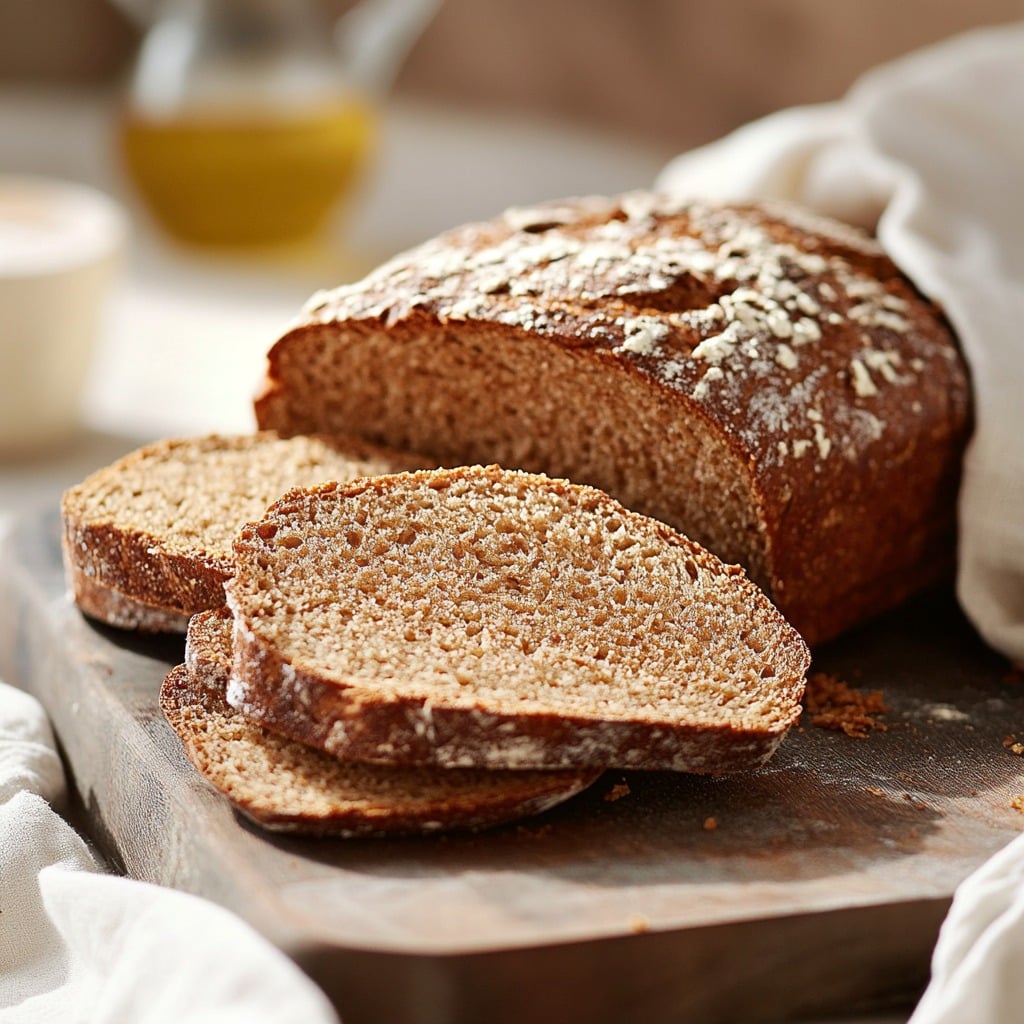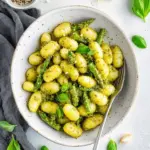This rustic whole wheat bread brings the perfect balance of softness and chewiness, with a slight nutty flavor that makes every bite a delight. The subtle sweetness from honey and a tangy touch from apple cider vinegar add layers of complexity, creating a warm, inviting loaf.
This homemade whole wheat bread is perfect for breakfast with a smear of butter, for making hearty sandwiches, or just for enjoying alongside your favorite soups. Plus, the process of making it yourself from scratch is incredibly satisfying, and the aroma filling your home is unbeatable.
Full Recipe
Ingredients:
-
2 cups whole wheat flour
-
1 cup all-purpose flour
-
1 tablespoon active dry yeast
-
1 ½ teaspoons salt
-
1 tablespoon honey
-
1 ¼ cups warm water (110°F)
-
1 tablespoon olive oil
-
1 tablespoon apple cider vinegar
Directions:
-
In a small bowl, combine warm water, honey, and yeast. Let it sit for 5-10 minutes until the mixture becomes foamy.
-
In a large mixing bowl, combine the whole wheat flour, all-purpose flour, and salt.
-
Pour the yeast mixture, olive oil, and apple cider vinegar into the flour mixture. Stir to form a dough.
-
Transfer the dough to a floured surface and knead for about 8-10 minutes, or until smooth and elastic.
-
Place the dough in a lightly oiled bowl, cover with a kitchen towel, and let it rise for 1 hour or until it doubles in size.
-
Preheat the oven to 375°F (190°C). Punch down the dough and shape it into a loaf. Place it in a greased 9×5-inch loaf pan.
-
Let the dough rise for another 30-45 minutes until it’s about an inch above the edge of the pan.
-
Bake for 30-35 minutes, or until the bread sounds hollow when tapped on the bottom.
-
Remove from the pan and let the bread cool on a wire rack before slicing.
Prep Time: 15 minutes | Cooking Time: 40 minutes | Total Time: 1 hour 55 minutes
Kcal: 160 kcal | Servings: 12 slices






